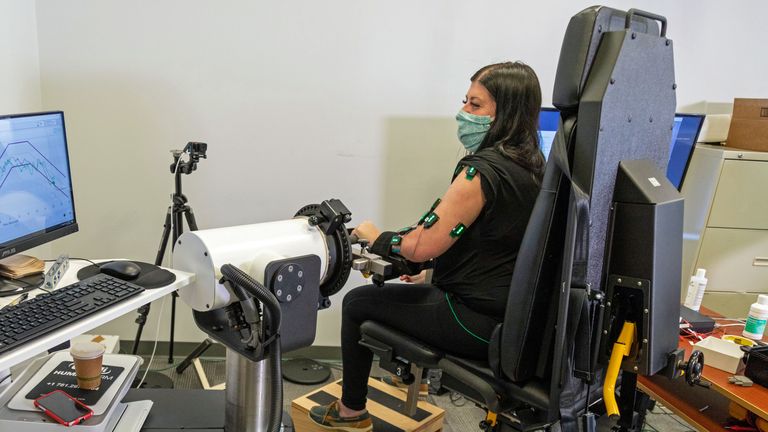A stroke survivor has been able to move her hand and arm for the first time in nine years after spinal stimulation.
Heather Rendulic was left paralysed on her left side after a stroke in 2012 at the age of 22.
Researchers from the University of Pittsburgh and Carnegie Mellon University in the US used new technology to stimulate her spinal cord in the neck area.
While being stimulated, it was possible for Ms Rendulic, 33, to move a can of soup and even use a knife and fork to cut steak, having not been able to do so for nearly a decade.
Ms Rendulic, who lives in the US, said: “Stimulation feels kind of like a tickle and it’s never painful but it takes some getting used to, I would say.
“It’s just awesome because I can move my arm and hands in ways that I haven’t done in almost a decade.”
Estimations show that around 100,000 people in the UK have strokes each year.
Around two-thirds of the 1.2 million survivors are unable to return to their jobs partly due to long-lasting effects on motor control.
‘Whole lab was crying’
Marco Capogrosso, an assistant professor of neurological surgery at the University of Pittsburgh and co-senior study author, said: “We discovered that electrical stimulation of specific spinal cord regions enables patients to move their arm in ways that they are not able to do without the stimulation.”
He said Ms Rendulic was “able to move her hand and arm after nine years from day one” after receiving stimulation.
“The whole lab was crying because…we didn’t really expect that this could work as fast.”
Read more on Sky News:
‘Agony’ for Nicola Bulley family
PM criticises changes to Roald Dahl books
Researchers believe their new technology may offer hope for people who live with disabilities that would have been considered permanent.
According to the study, the benefits of spinal stimulation are felt for up to four weeks after the end of the procedure, with no serious side effects.
The procedure involves implanting a pair of thin metal electrodes, which look similar to spaghetti strands, along the neck to engage the intact nerve cells.
More trial participants are wanted to allow researchers to understand which stroke patients can benefit most.







